1960 Geography Field Trip
During the 1950s, a number of Grammar School subjects introduced field trips. This photo was taken during July 1960 when R.G. Haywood and Ron Illingworth escorted a party of 20 pupils to the Lake District.
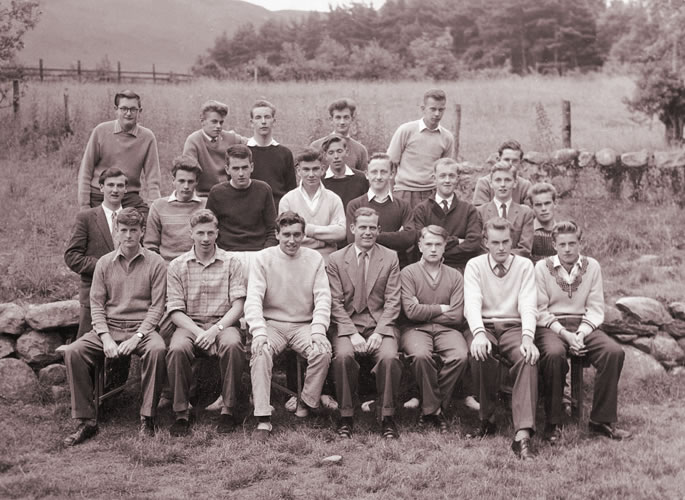
Back Row: M. Elson, G. Garner, Bennett, R. Bluff, Atkin
Middle Row: M01, M. Haynes, Thomas, Peter Jordan, Payne, Smith, M07, David Brunning, M09 (obscured), Stirton
Front Row: P. Hill, P. Gardener, R.G. Haywood, Ron Illingworth, J. Diggens, Taylor, M. Whitewood
The party of boys left Burton on Friday, 15th July for a week’s geographical work in the Lake District under the supervision of Mr. Illingworth and Mr. Haywood. The journey used Stevenson’s Coach and the route taken took them through Preston and Lancaster (being of course, before the availability of the M6 motorway) and through the Lakes to their final destination of Newlands, three miles south-west of Keswick, on the western shore of Lake Derwentwater. Finally arriving at Newlands Hostel around five o’clock, the first thing to do was to unpack everything and have dinner.
Saturday, the first full day, was taken up with a ridge-walk along Causey Pike to the village of Buttermere. The Cumbrian coast and Southern Uplands of Scotland were just visible on parts of the walk. Due to the dangerously steep descent and the time factor, a visit to the actual Buttermere village was abandoned, favouring the less steep descent of Whiteless Pass to the Valley of Soul Beck and following the ‘Becks’ back to Newlands.
Sunday saw the party in the lovely countryside of Watendleth and Borrowdale. The Loclere Falls was the starting point after a boat trip across Lake Derwentwater. The first stop was Watendleth Valley where the local shop did good trade in chocolate, postcards and stamps. From here, the walk took them through Borrowdale to the small village of Grange.
On Monday, the party was taken on an ‘Urban Morphology’. The two towns of Keswick and Cockermouth had been chosen and the party split into two groups with a master going to each town to supervise their studies. Back at the Hostel in the evening, the various findings were recorded. The next day, reports on the work was presented by Mr. Haywood.
 Tuesday saw the first bad weather. The planned route for the day was along the Cat Bells Ridge to Dale Head Tarn but half way along the ridge, thick dark clouds came down with the start of some rain so the party returned to the Hostel, finding the best possible shelter on the way arriving back some time before dinner time.
Tuesday saw the first bad weather. The planned route for the day was along the Cat Bells Ridge to Dale Head Tarn but half way along the ridge, thick dark clouds came down with the start of some rain so the party returned to the Hostel, finding the best possible shelter on the way arriving back some time before dinner time.
Farm studies were the task for Wednesday. The party was this time divided into three groups with a nominated leader in each. The three areas surveyed were Borrowdale Valley, Bassenthwaite Lake, east-side and Bassenthwaite Lake, west-side. During the course of the day, Mr. Illingworth and Mr. Haywood visited all three groups and after dinner back at the Hostel, the group leaders gave their report.
The last full day, Thursday, was spent climbing the Great Gable. The party was taken by bus to Thornywaite. From here, they walked through the village of Seathwaite and, in what became fairly heavy rain, they proceeded to the summit (2,949 ft.). Despite the light veil of cloud, the view was thought well worth the effort ( pictured ).
Friday morning was spent packing before the Stevenson’s Coach arrived for the return journey.


 Raymond Crowther was educated at Heath Grammar School in Halifax. He qualified from here for a degree at University College, Durham but, during his time there, war broke out which meant that he was to join the RAF. During the war, he spent most of the time with the coastal command in Iceland. At the end of the war, he made the decision not to go back and complete his degree but rather, to complete teacher training.
Raymond Crowther was educated at Heath Grammar School in Halifax. He qualified from here for a degree at University College, Durham but, during his time there, war broke out which meant that he was to join the RAF. During the war, he spent most of the time with the coastal command in Iceland. At the end of the war, he made the decision not to go back and complete his degree but rather, to complete teacher training.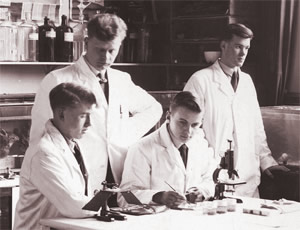 Raymond always had a strong interest in microbiology and in physiology. He had a contact at Birmingham University who supplied a whole range of bacterial cultures which were maintained in the small sanctum off the Biology laboratory at Bond Street. The Grammar School had what would nowadays be considered a quite frightening collection of pathogens. The marine tanks also had an interesting origin. Raymond sourced them from contacts at the Marine Biological Station in Plymouth who supplied carboys of seawater and the specimens of marine life – which were far from easy to keep thriving!
Raymond always had a strong interest in microbiology and in physiology. He had a contact at Birmingham University who supplied a whole range of bacterial cultures which were maintained in the small sanctum off the Biology laboratory at Bond Street. The Grammar School had what would nowadays be considered a quite frightening collection of pathogens. The marine tanks also had an interesting origin. Raymond sourced them from contacts at the Marine Biological Station in Plymouth who supplied carboys of seawater and the specimens of marine life – which were far from easy to keep thriving! Raymond’s enthusiasm for his subject was considerable. From somewhere he had acquired a dead dog, and decided that the skeleton would be an excellent teaching tool. The problem was, how to get rid of the flesh? The solution was to ‘let nature take its course’ by allowing natural bacteria and flies to do their job! The dog was ensheathed in chicken wire and suspended out of the lab window, more or less above the door into the cloakroom area and opposite the door to the woodwork room.
Raymond’s enthusiasm for his subject was considerable. From somewhere he had acquired a dead dog, and decided that the skeleton would be an excellent teaching tool. The problem was, how to get rid of the flesh? The solution was to ‘let nature take its course’ by allowing natural bacteria and flies to do their job! The dog was ensheathed in chicken wire and suspended out of the lab window, more or less above the door into the cloakroom area and opposite the door to the woodwork room.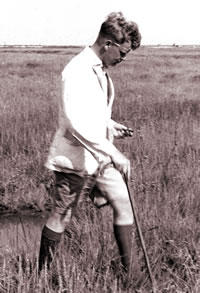 He established the Field Club by popular request and in 1950 took a group to the New Forest, where they camped on the edge of heathland and in sight of the Balmer Lawn Hotel at Brockenhurst. The trip down had been organized ahead in typical Raymond Crowther style, and to students the arrangements just seemed to happen with no regard for the much time and correspondence required by Mr Crowther to ensure that the trip was very successful.
He established the Field Club by popular request and in 1950 took a group to the New Forest, where they camped on the edge of heathland and in sight of the Balmer Lawn Hotel at Brockenhurst. The trip down had been organized ahead in typical Raymond Crowther style, and to students the arrangements just seemed to happen with no regard for the much time and correspondence required by Mr Crowther to ensure that the trip was very successful.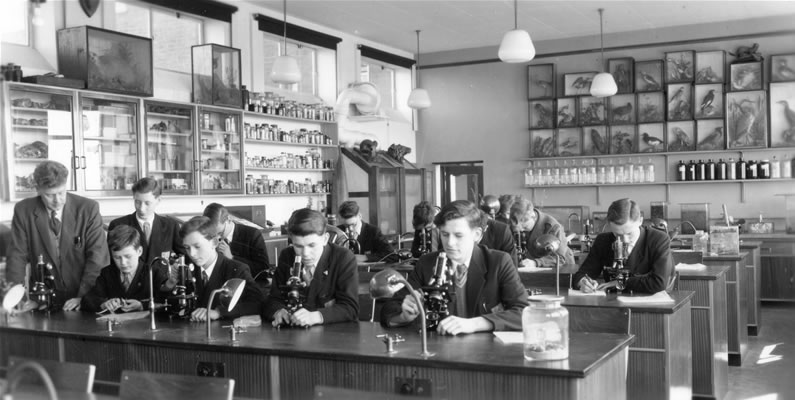


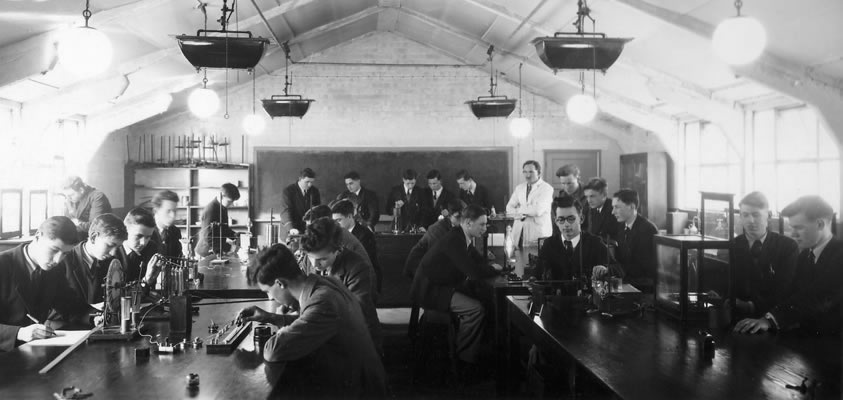
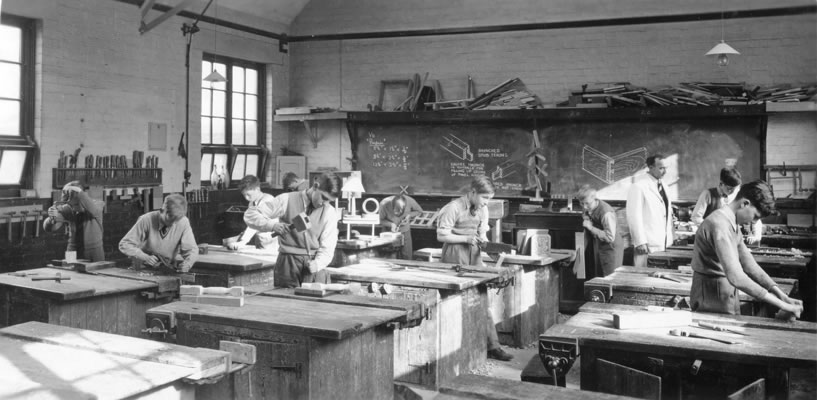
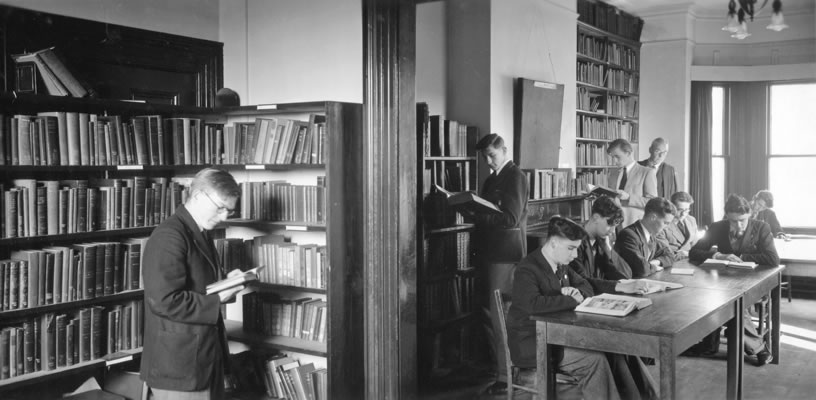
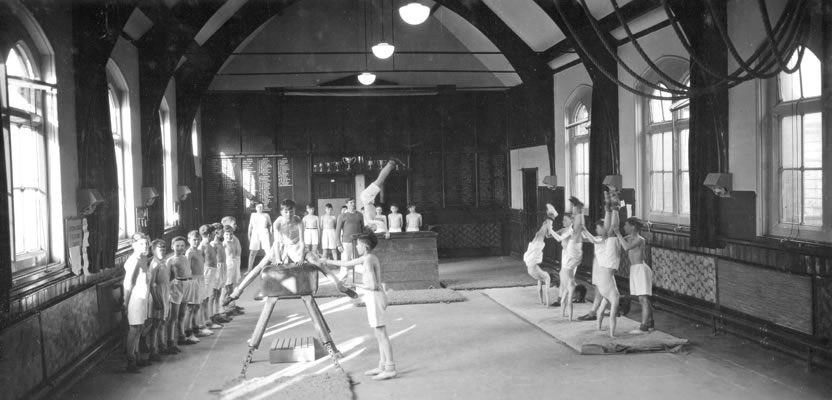
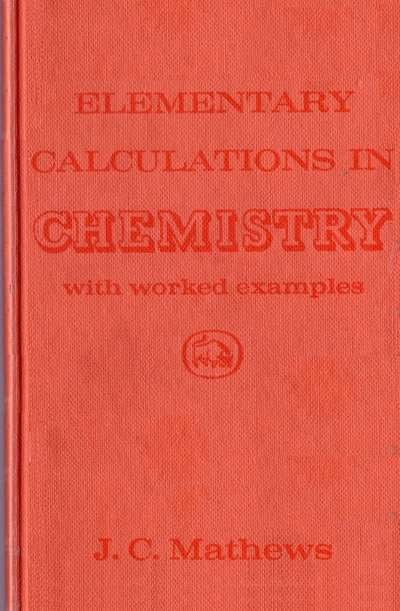
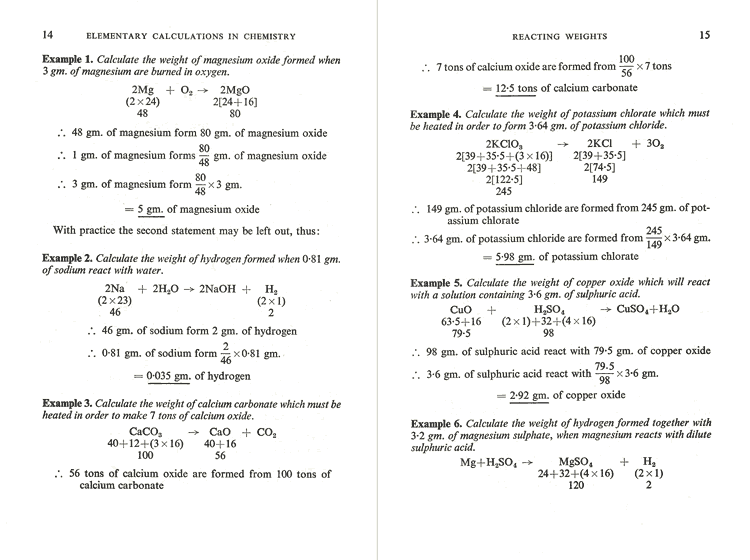


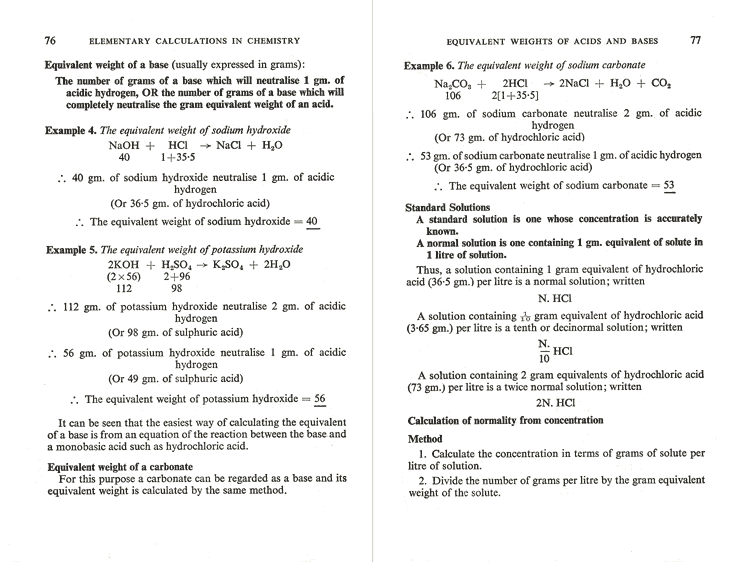

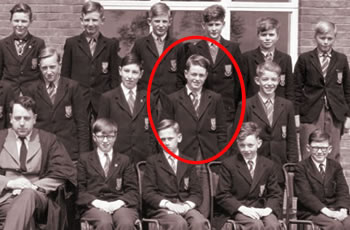
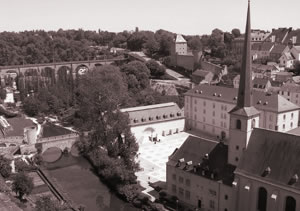 At 8:30pm the next morning, we set out for the train station to catch a direct express to Luxembourg City. The train passed through the hilly, wooded countryside characteristic of Southern Belgium and Luxembourg. We arrived in Luxembourg City, the capital of the Grand Duchy, at 12:30pm and, after lunch, we walked round the old city of tall buildings until after four o’clock, when we caught the auto-rail to Ettelbruck, 25 Km north on the river Shzette. We stayed the night at the Youth Hostel here and next morning, caught the auto-rail to Goebelsmuhle. From here, we walked in the pouring rain across wooded countryside to the small village of Kautenback and on to the town of Wiltz, this time along the road because of the very wet conditions; a distance of 17 Km in all.
At 8:30pm the next morning, we set out for the train station to catch a direct express to Luxembourg City. The train passed through the hilly, wooded countryside characteristic of Southern Belgium and Luxembourg. We arrived in Luxembourg City, the capital of the Grand Duchy, at 12:30pm and, after lunch, we walked round the old city of tall buildings until after four o’clock, when we caught the auto-rail to Ettelbruck, 25 Km north on the river Shzette. We stayed the night at the Youth Hostel here and next morning, caught the auto-rail to Goebelsmuhle. From here, we walked in the pouring rain across wooded countryside to the small village of Kautenback and on to the town of Wiltz, this time along the road because of the very wet conditions; a distance of 17 Km in all. The next day, it was raining again so, instead of walking, we caight the auto-rail to Ettelbruck where, because of the weather, we hardly did anything until 5:30pm when we caught the train to Diekirch, ‘The Burton-on-Trent of Luxembourg’. We travelled by bus from Diekirch to Vianden where we stayed for the following two nights, again, in a Youth Hostel. Vianden is on the eastern border of Luxembourg, bordering with Germany and catered for tourists. The town is situated in yet another deep valley where a river had cut deep into the surrounding wooded country which seemed to characterize Luxembourg, and a chair-lift passes from the town, across the river and up to a chalet on the mountainside. At the top of the mountain was a 13th century castle overlooking the town. We could see a scheme in progress for damming up the valley to provide power or a supply of water.
The next day, it was raining again so, instead of walking, we caight the auto-rail to Ettelbruck where, because of the weather, we hardly did anything until 5:30pm when we caught the train to Diekirch, ‘The Burton-on-Trent of Luxembourg’. We travelled by bus from Diekirch to Vianden where we stayed for the following two nights, again, in a Youth Hostel. Vianden is on the eastern border of Luxembourg, bordering with Germany and catered for tourists. The town is situated in yet another deep valley where a river had cut deep into the surrounding wooded country which seemed to characterize Luxembourg, and a chair-lift passes from the town, across the river and up to a chalet on the mountainside. At the top of the mountain was a 13th century castle overlooking the town. We could see a scheme in progress for damming up the valley to provide power or a supply of water.
